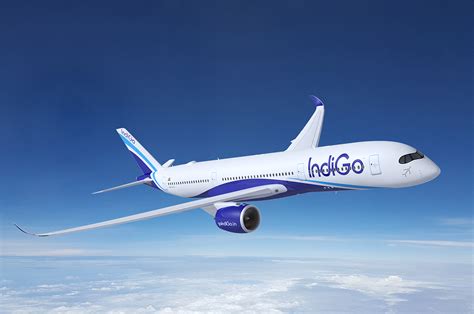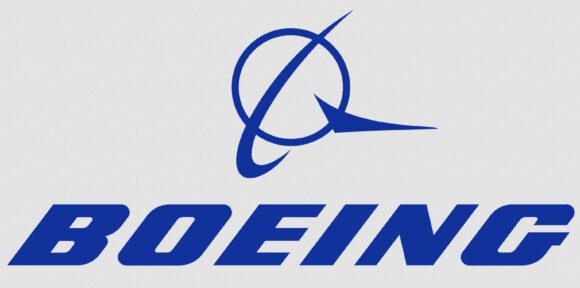The commercial aerospace industry has two duopolies – a big one (Airbus & Boeing) and a small one (Bombardier & Embraer). If markets were clearly differentiated these four companies would coexist in an environment where there are two competitions. But, as we know, the commercial aerospace business is not cleanly split – there is a growing area of friction between the duopolies where their interest meet.
The area where the friction is occurring is the 111-140 seat segment, and that segment itself built on the foundation of the 91-110 seat segment. The under 100 seat segment is where the regional jet makers of the small duopoly have traditionally traded and honed their craft. Success at the sub-100 seat segment has enabled the smaller duopoly firms to experiment by stretching aircraft and even developing aircraft with more than 100 seats. The success Bombardier and Embraer enjoyed has attracted attention and competition from Mitsubishi in Japan and SuperJet from Russia and Italy. To maintain their duopoly Bombardier and Embraer decided to grow their aircraft up to the nominally 130 seat size.
In doing so, they are now entering the deeper side of the pool. The going has been tough because the big duopoly has learned about new entrants. While Boeing fixated on McDonnell Douglas, Airbus quietly entered and ended up being the other in the big duopoly. The lesson is seared into both Airbus and Boeing’s conscientiousness – nobody will be allowed to enter their space without attracting the toughest trading conditions.
So what does this mean for the ambitious players in the small duopoly? Are they doomed?
At the end of last year the global in-service fleets showed the market being over 5,000 aircraft for the two seat segments listed. This is certainly large enough for the small duopoly to find highly attractive. The stepping stone of the 91-100 seat segment provides sufficient momentum to encourage their ambition. The big duopoly has a big stake – but its offerings are no longer competitive. The A318 and 737-600 have been eclipsed. The 717 is a one trick pony at Delta Air Lines; which is the only airline acquiring the type in second hand markets. Besides, there is a juicy segment of aircraft in service that come from OEMs which have left commercial aerospace. One can’t blame Bombardier and Embraer seeing opportunity.
However once the small duopoly decided to move into the over 100 seat segment, it had to offer a family solution that spreads over more than one segment. The obvious spread has to go up. Which brings the small duopoly into a big market of over 3,000 aircraft but also confrontation with the big duopoly.
However as the backlog chart shows that although the future is fraught with risk, it is not bleak. In backlog terms the big duopoly has been pushed out of the 91-110 seat segment. Many of the 526 aircraft in that backlog will replace big duopoly aircraft as they retire – making the backlog likely to grow considerably. Since nothing new in this segment is coming from the big duopoly, the small duopoly will gain momentum for its smaller next generation families in this segment.
Looking at the more dangerous 110-140 seat segment, we see the small duopoly already has a respectable foothold. This is the segment where 737-700, 737-7MAX, A319 and A319neo exist. We have previously suggested that the big duopoly might be quietly vacating this space. Based on what we see, we continue to think so. Which means the larger sized family members of the small duopoly offerings are likely to gain traction here too.
The big duopoly can and is playing a spoiler role though. It plans to eviscerate the 111-140 segment by moving as many of its bigger customers to the next highest segment. Even if it manages an nearly impossible 50% market move, the remaining market is likely to offer the small duopoly sufficient space to exist. We estimate the these two segments could generate demand for 4,500 aircraft over the next 20 years. Of course the ambitious small duopoly can then start the next phase of airframe stretches and the fun will continue.
Views: 1





exactly. Boeing and Airbus have 3 choices:
option 1) kill both Embraer and Bombardier before one or both grows into the next Airbus (well, maybe not next Airbus, but big enough for them to reach the next step: build a 200 seat plane : same cockpit and systems, just bigger plane). It wouldn’t be hard to imagine given their size (they could obliterate both but it would come at a cost for sure).
option 2) face the fact that this is mostly inevitable, it might not be so easy to kill both Embraer and Bombardier. If you kill one, the other one becomes even more of a problem (kill none or both, don’t kill just one, you’d just make the other one more than double the threat). Then there’s Comac and others to worry about. And Boeing and Airbus already have other issues to worry about. The cash would be better spent on not giving 50% rebates on their planes and using the cash to come up with the next generation of planes to make it too much of a big step for BBD/Embraer/others to even try catching up. At this point, I think Boeing needs to come up with a new 737 ASAP. Whether the LEAP-1b rumors are true or false (heat damage and 5% below fuel burn specs), I think we all agree that the venerable CFM-56/LEAP is reaching its limits while the GTF has lots of room to sprint without even going into “improvement tricks”. Airbus is in somewhat of a better position because both engines can be fitted on the A320 (LEAP and GTF). But still, they very well know that they started with the A320 and used it as a stepping stone for bigger planes with systems commonality. So, they too will need to up their game. The Chinese might only be assembling the A320 in China right now, it won’t take 20 years for them to mass copy it. I’d say keep the money, don’t spend it all on trying to prevent incumbents and use the money to build us the next generation of planes asap. I sure hope they both have some skunkworks project in progress for the single-aisles because, otherwise, they will get nibbled from below sooner than we think.
option 3) If you need a NSA, buy up BBD or Embraer. BBD: at 3.5B valuation, you get a train, plane and business jet company for a little more than the price of developing new wings for the 737… You could even resell the train company for 3B easy and keep everything else, including the CSeries, Global jets, LearJet. Of course, I don’t have 3.5B dollars. Anyone has some change I could borrow? Option 3 is an M&A wet dream; I sense a lot of wet mouths on wall street over this. Personally, I hope this doesn’t happen because it would delay option 2: the next step in technology (the hard, risky choice but the one which would advance our species forward).
Finally, think of this: supposed the pricing war continues and one or both of Embraer/BBD can be brought down. We will then have a bidding war on the remnants. Wouldn’t China want to pick up BBD? Train, planes and everything else in between. That could save then 5-10 years easy. All for a mere 3.5B. I’m sure they’d be willing to go to 10B for the package. Would Boeing and Airbus try to prevent that too?
Assuming Bombardier doesn’t go to the wall getting the CSeries to market, they WILL stretch it at least twice.
Which will give them a family right up to a 200 seat single class (dense) aircraft with a range of around 2000 nm. Which is long enough for any Ryanair or Wizz Air flight.
Good points – what many think is a graveyard might in fact be a nursery
Very good comment
Good text. Close to option 3, more an investment/partnership with Bombardier since with the family in control you can’t let the company go in the usual way… The Chinese (COMAC in the bidding process) would crank up the bids for Bombardier, the train business & value is a great asset in the deal for everyone, could be resold/spinoff etc need be. Many options here for Bombardier, a great situation to be in…
Twitter @sylvainfaust
I cannot imagine Southwest and Westjet up-gauging their massive fleets of 7377 and 7376’s. The trip cost will be appalling. If United, AA and Delta deploy Cseries they will start to eat Southwest lunch in some markets. Southwest needs to abandon 737 and switch to CS100, 300 and become the launch customer for CS500. I think they are waiting to see in operation dispatch reliability get close to the mature 737 and then they will jump.
Worth noting that Southwest’s CEO (Gary Kelly), at the time that they bought AirTran (and so had two airplane types: the 737 and the 717s which they offloaded to delta) said that they COULD fathom having 3 airplane types. Right now, they are back at one airplane type (737 of course). I could easily see them going to 2 types (including either the CSeries or the Q400 or even both). As for WestJet, they currently operate both 737s and Q400s. And they are looking into adding 767s for international routes (3 airplane types)! The Q400s have been great to WestJet. Southwest had to drop some route in the past year or two that could’ve been easily replaced if they had Q400s (jet speed, 30% cheaper to operate, easy to fill). There is a lot of growth potential for southwest right there. Just by adding one aircraft type. When you talk about numbers like 30% less to operate, the fleet commonality discussion starts to fade… OR, if they really don’t want propeller planes, they could go with a mix of CSeries CS100 and CS300 as a start (to cover 100-130 seats). Hedge your bets if LEAP-X doesn’t deliver.
bombardier is in a sweet spot to take advantage of aging systems that are being stretched to the usefulness of the age of the design. adding new engines is o k , adding pieces of modern airframe components is ok .but adding a whole new complete airplane..
what would you like to be in a Tesla or a Chysler Caravan